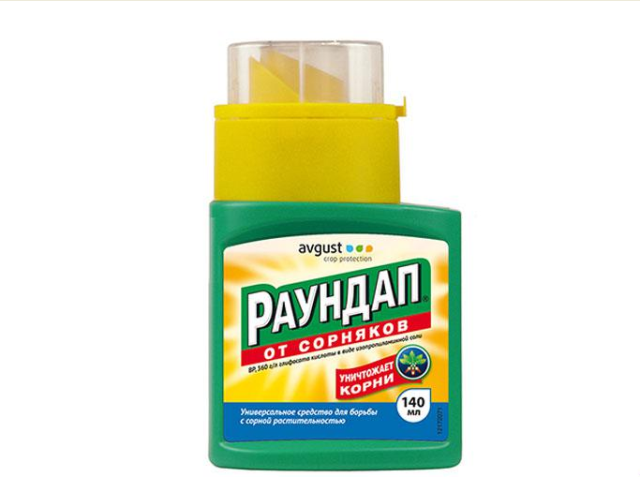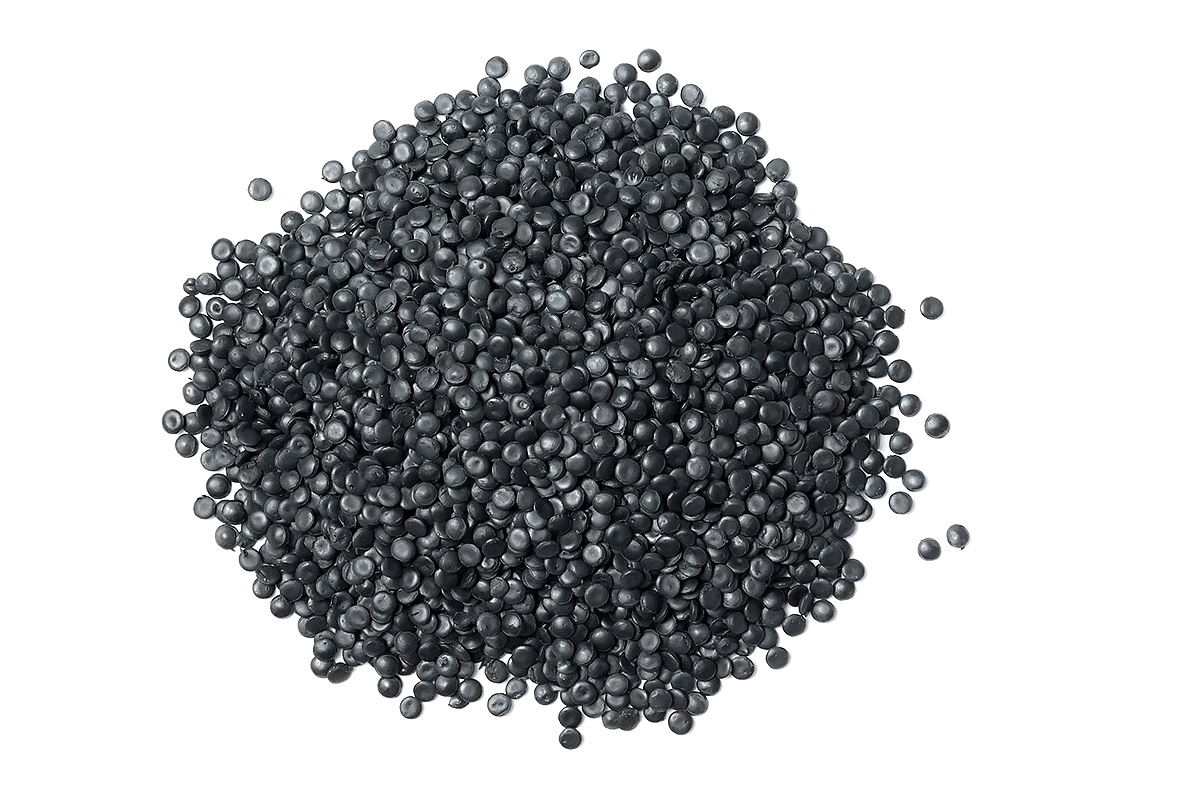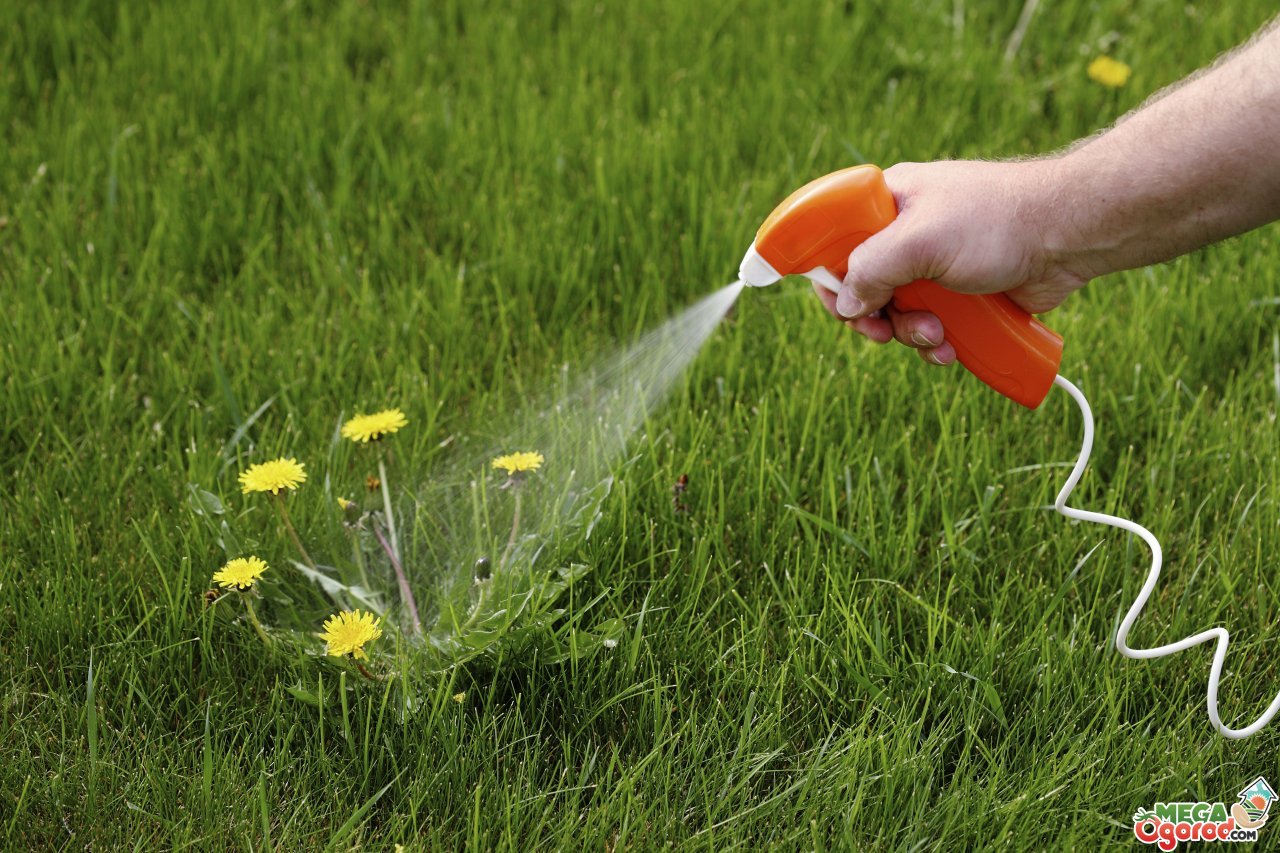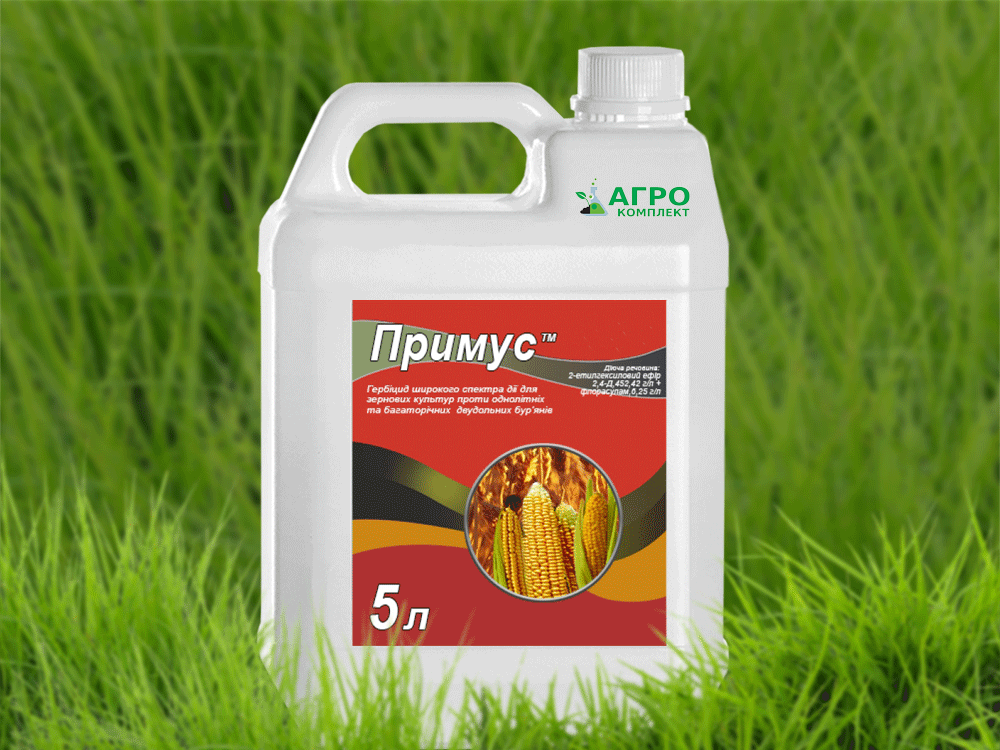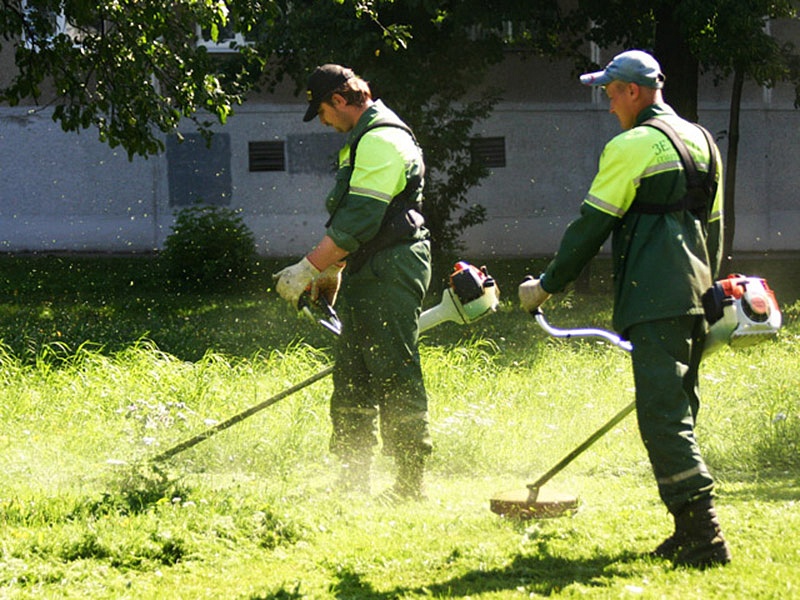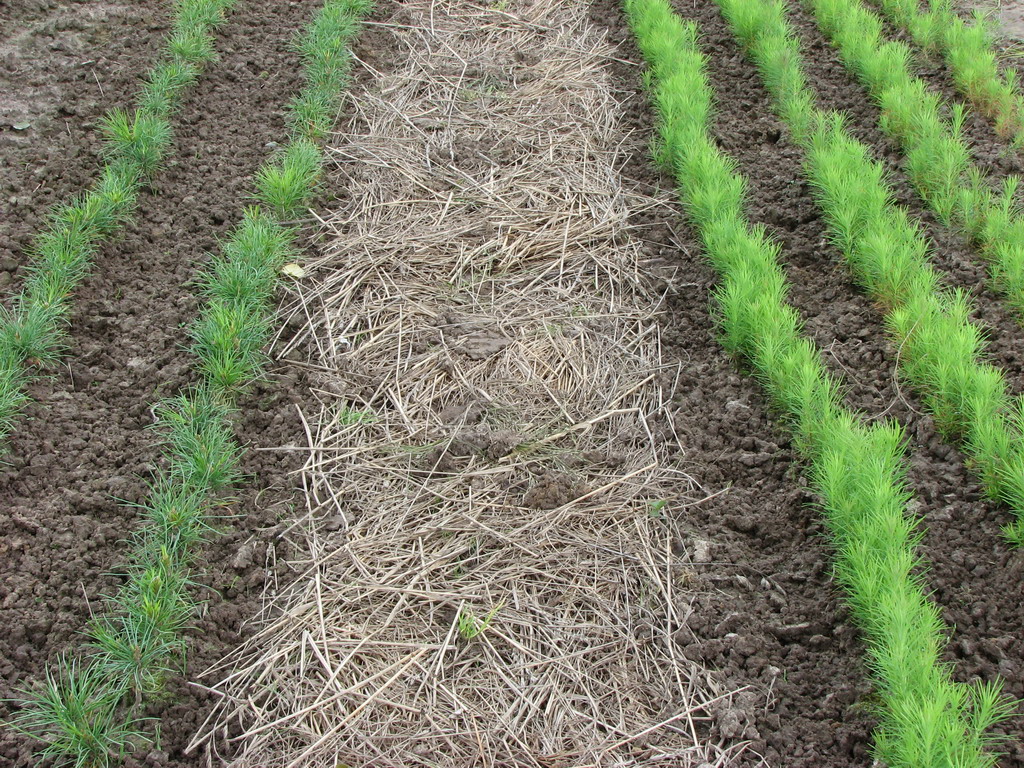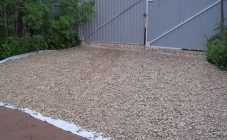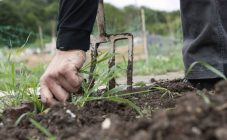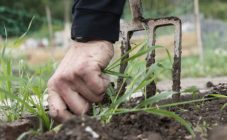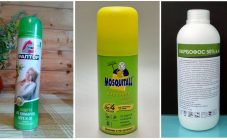Content:
Cultivation of cultivated plants is impossible without weed control. Having figured out how to cultivate the land so that the grass does not grow, you can save time and energy. There are many grass and weed control agents on the market today, but finding the best one takes some knowledge. Among the means for destroying herbs with an effect similar to a chemical, there are those that can be prepared independently at home.
Chemical treatment
The use of special chemicals has become the basis for the destruction of weeds in the garden or lawn. Weed killers, called herbicides, gained popularity in the middle of the last century, after they began to add ingredients that had more powerful capabilities. Due to this, herbicides have a variety of effects and effects on plants, in particular:
- the number of ways of penetration of drugs into plants has increased;
- there was an opportunity to choose universal or selective impact;
- the drugs began to have a significant effect on the life processes of agricultural crops.
By the nature of the action, all herbicides are divided into contact and systemic ones. The first category includes drugs that are effective only in the place of direct contact with the treated area. In this regard, systemic herbicides are more effective, since when the drug enters some separate part of the weed plant, it quickly spreads throughout its aerial part and penetrates the root system, which soon leads to the death of the weed. Such preparations are also more profitable in economic terms, since they can reduce the consumption of working fluid and quickly clear the land from weeds.
Depending on the spectrum of action, the drugs in question are divided into two categories:
- solid;
- selective.
The first group of drugs includes herbicides that completely destroy all vegetation within its range of action, including cultivated ones. Such funds are usually used in cases where it is necessary to obtain a site that would be absolutely completely free of any plants. For example, continuous-action herbicides are widely used in construction to clear areas. Other areas of application of these drugs:
- laying of roads, highways, highways;
- bookmarking of reservoirs;
- placement of paving slabs on the site;
- preparation of a site for planting lawn grass.
The main drugs in this category include:
- Tornado;
- Glyphosate;
- Antiburian, etc.
Any agent against the growth of grass of selective action is characterized by the ability to destroy only weeds, without causing any harm to cultivated plantations. Depending on the varieties of weeds, their number and species, a specific preparation and its concentration are selected on an individual basis. Such means are most common in agricultural production, as well as for some other purposes, for example, in maintaining a lawn in a well-groomed and leveled condition.The preparations are used to destroy the most common weeds, in particular:
- wheatgrass;
- hogweed;
- dandelion;
- horsetail;
- plantain;
- all varieties of weeds.
The drugs in question are available in various forms, in particular:
- emulsions;
- suspensions;
- granules;
- thinners;
- powders.
Selective herbicides are characterized by a special variety of effects on plants, which can be, among other things, complex. This includes the following mechanisms:
- destruction of cell membranes;
- violation of photosynthetic processes;
- negative impact on fat synthesis;
- inhibition of the formation of amino acids, etc.
Advantages and disadvantages
The prevalence of the chemical method for the destruction of weeds is largely due to a number of positive properties that are inherent in it, in particular:
- low energy costs, significant savings in time and effort;
- the ability to quickly spray large areas of the territory;
- relatively fast half-life in soil;
- the ability to effectively fight even the most difficult to remove and problematic weeds;
- the availability of a choice of one or another drug depending on weather and climatic conditions, species diversity and number of weeds, the general condition of the site, agricultural cultivation techniques.
Along with the obvious advantages, chemical weed spraying has a number of disadvantages, which include:
- the possibility of using the drug only against adult plants, and not seeds. Seed material inside the soil subsequently runs the risk of becoming a source of serious problems (the seeds of some weeds can be stored in the soil for several years while maintaining their sowing properties);
- the risk of destruction of cultivated plants when using continuous herbicides;
- the need to use special equipment for working with drugs, as well as special protective equipment.
Most experts are inclined to believe that the chemical protection of a plant is the most effective remedy among all possible ones, but it can be abused. Large areas and fields can be treated with pesticides, while in small areas it is better to first resort to alternative methods of controlling weeds, including agrotechnical ones. This is especially true of those plots where berry bushes or fruit trees that have entered the time of fruiting are cultivated.
How to poison the grass: folk remedies
Among the substances found in the household, there are many good remedies with which you can generally kill growing grass. The most effective of these involves mixing two tablespoons of table salt and five tablespoons of vinegar. The resulting mixture is dissolved in a liter of boiled water. After mixing with a homemade herbicide, you can treat the weeds.
Salt is an effective remedy for the herb to keep it from growing and can be used separately from other substances. Spread 1.5 kg of product evenly over each square meter of the planting area. This site will subsequently not be suitable for agriculture, however, when fighting weeds on the paths or when freeing up the area for a lawn, this method is quite justified.
Soda, which is a good remedy for grass growth, has a similar effect under the same conditions.Its powerful alkaline reaction inhibits the growth of all plants, including weeds. To enhance the effect, the product is mixed with finely grated agricultural soap.
In order to destroy weeds and at the same time preserve crops, it is recommended to resort to the use of medical alcohol. This liquid, which is a successful grass destroyer, is diluted with clean water in a ratio of 1:10. Only the aisles are spilled with the resulting solution. There are about 5.5 liters of liquid per 1 hundred square meters.
Mechanical weed control
This category includes the weeding of weeds, which is carried out either manually or mechanically. This is relatively effective, but very time consuming and time consuming. Its effectiveness largely depends on the species diversity of weeds. So, purslane, characterized by a weak root system, can easily be removed from the ground, while this method is not suitable for wheatgrass, thistle and similar plants. These plants have a hard time pulling out the entire root system and will continue to grow. Hand weeding in large areas is also problematic.
Mechanical mowing usually involves removing only the aerial part of the plant, while the root system is still preserved in the ground. This method is effective only if at least three mows are carried out in a relatively short period. In such cases, the rhizome will become withered and will no longer form new shoots, but this rule does not apply to all weeds.
In order for manual weed removal to be effective, certain recommendations should be followed:
- Use a pitchfork as an alternative to a shovel as several new shoots can form from the chopped rhizome.
- The procedure is carried out before the weeds form seeds.
- Weeds are removed as early as possible, before they have had time to grow significantly.
- Rooting should be done as thoroughly as possible to reduce the risk of weed reoccurrence.
- Weeds are most easily removed immediately after the rain has fallen.
Mulching
This method is implied by the agricultural technology of cultivating many plants and aims, in addition to reducing the number of weeds, to preserve moisture in the soil. As a mulching material, they are usually used:
- sawdust;
- boards;
- tree bark;
- needles;
- cardboard;
- crushed stone;
- agrofibre, etc.
Mulch suspends the process of photosynthesis of weeds, which negatively affects their life in general. Gradually, it is possible to etch not only the top of the weeds, but also their root system. Mulching also allows you to ennoble the plantings, improving their appearance. The downside of this procedure is its duration. Having covered the plants with mulch in the spring, it will be possible to disassemble this shelter only in the fall. For garden and horticultural crops, special slots are made in the shelter.
Other methods
Burning out weeds is distinguished by good efficiency. To do this, use a blowtorch. In order to successfully burn out weeds on a plot, adhere to the following recommendations:
- carry out the procedure before the first shoots of cultivated plants are formed;
- do not stay for a long time in the same place;
- water the area abundantly upon completion of burning.
If you have some experience, it is allowed to plant the plants more closely to each other. Weeds grow much worse in cramped conditions. It should be borne in mind that in thickened conditions there is a serious risk of developing fungal diseases.
If any area has been completely freed from weeds, it can be isolated from the rest of the plot. To do this, a shallow groove is dug along its edges or fragments of slate are dug into the ground 25 cm deep.
Precautionary measures
It is recommended to prepare the working solution of the herbicide on a specially equipped site. If possible, it is recommended to do this at a distance of at least 200 m from residential buildings.
Spraying is usually carried out in the mornings and evenings, in calm, windless weather, best of all in cloudy weather. In the sun, the herbicide evaporates quickly and its effectiveness decreases. In strong winds, particles of the spray solution can splash onto crops and cause damage.
Sprayers and all other equipment left over after treatment are thoroughly washed and stored. Empty containers from herbicides are disposed of in accordance with generally accepted requirements.
If the working fluid of the preparation gets on the surface of the skin of the hands or face, it is necessary to wash this place with soap and water. If the herbicide gets into the eyes, they are immediately washed with the patient with an amount of clean running water. If the drug gets inside the body, the victim is immediately given to drink water with activated carbon dissolved in it at the rate of 3 tablets per liter of liquid. Immediately after this, you need to try to induce vomiting. The victim should then seek the help of a qualified technician.
Among the many herbal remedies, you can easily choose the one that best suits your specific conditions. Possession of certain knowledge on its use will make the process of destroying herbs easy and effective.
